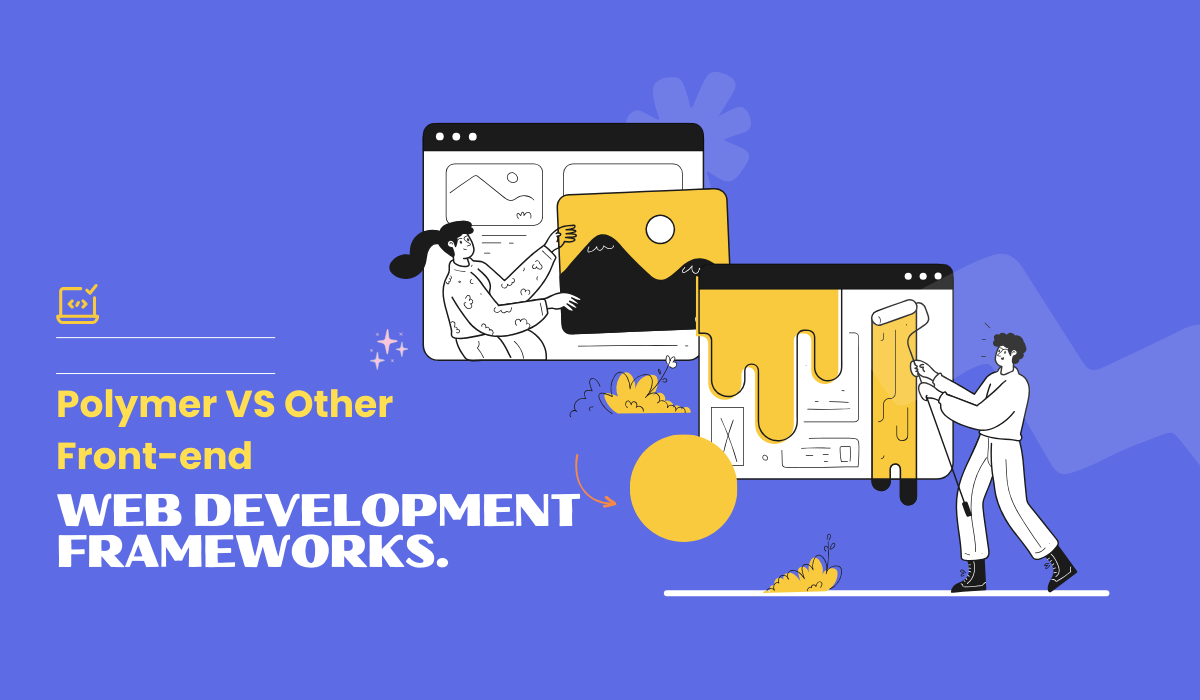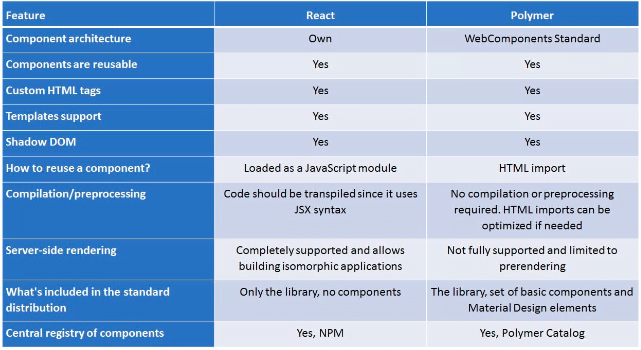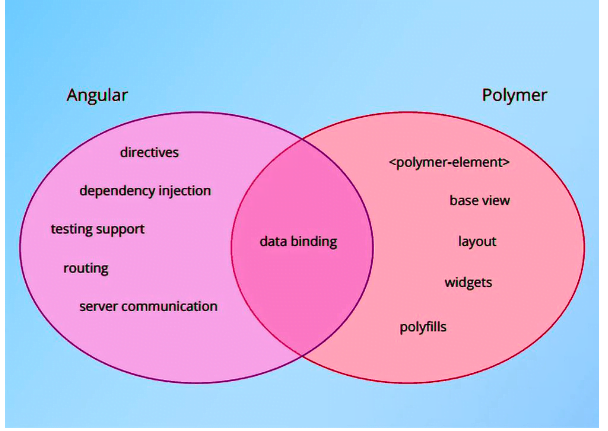Polymer VS Other Front-end Web Development Frameworks

Front-end web development frameworks refer to a set of tools and resources created for software developers. Frameworks allow developers to build and manage web applications, websites, and services. They can also create application programming interfaces. Web development frameworks also known as web application frameworks. These comprehensive frameworks offer development teams various important benefits.
Web development or web application frameworks allow developers to create applications feasible to run on different famous technology stacks. These frameworks contain various functionalities and features to help reorganize application development. Web application development provides the foundation and services essential to support the content management system.
[ez-toc]
Overview of Frameworks
You can choose from a wide selection of web development frameworks. Each framework offers various features and helps development teams a variety of options to choose from. Most frameworks take up one of two classifications. First category targets front-end development and the other relates to the back-end.
Front end Frameworks:
This category is called client side or user side framework. Front end framework focuses on user experiencing components of a web application. It provides essential components and templates to make interactive web pages in a browser using different industry technologies.
Back end Frameworks:
This category is called server side framework. It is dedicated to the back end and the server components to support web applications. The framework is responsible for mapping URLs, interfacing with data sources, handling HTTP requests, and supporting other back end processes using industry technologies.
Most web application or development frameworks are different from each other with their strategies to application structure. Some of these frameworks are developed on Model View Controller architecture. It divides the web app development into three layers including Model layer, View layer, and Controller layer.
- The Model layer is related to the back end business logic and data.
- The View layer is dedicated to facilitate interactivity and the user interface.
- The Controller layer functions as an interface between the view layers and model. It is responsible to process requests between them.
Moreover, Model View View Model (MVVM) is a deviation of the Model View Controller architecture. The MVVM model contains the View Model layer instead of the Controller layer. This framework features essential controls to deal with the View layer. It uses binding to attach the UI components in the View layer to the View Model layer’s controls.
What popular apps are built with Polymer?
Google Maps utilized Web components of Polymer to develop Maps using JavaScript API. It was designed to easily integrate into any app and modified according to the app requirements. USA Today accustomed Polymer to support design and development teams to cooperate effectively on their UI project.
YouTube manipulated Polymer Web Components to reconstruct their desktop and mobile sites. Google Earth decided to use web components and elements of Polymer to reorganize its mobile app and website. You can hire dedicated front end developer with significant Polymer JS knowledge.
McDonald’s redesigned its Menu Board software using Polymer for its stores in 15 thousand locations in the United States. The modified software design enabled the firm to change layouts according to the needs of every store.
Polymer VS Other Frontend Frameworks
Google developers created Polymer JS as an open source library. It was developed for reusable components to create web applications. Polymer offers a simplified way to reproduce the functionalities of web components with compatibility for different browsers.
Google services and other popular platforms are typically using Polymer JS libraries that are gaining more popularity. It is supposedly recognized with its controlled design methods of the components. The main reason points to its powerful support for web components. You can hire Polymer offshore web developers to perform different crucial tasks.
Benefits of Polymer
Creation of Custom Elements: Developers can grasp the performance to compose encapsulated as custom elements.
Simple Onboarding: Polymer comes with organized and improved documentation than React and Angular. This is a significant benefit while bringing in new developers to the team.
Data Binding: It enables one way and two way data binding. The functionality of two way data binding enables developers to modify in both downward and upward directions between DOM elements and the host elements.
Linking Third-Party Libraries: Polymer JS architecture isn’t outfitted with an extra security layer. It allows connections to third-party libraries to build applications.
What is React?
React JS is developed as an open source JavaScript library to create web apps with powerful user interfaces. It provides developers the elasticity to develop reusable custom components that inspire swift development operations.
Pros of React
Efficient web pages: React apps can increase efficiency with refreshing the user interface of web pages to save a lot of time.
Reusability of Components: It separates logic and controls to help create reusable components to make faster and easier application development.
High Performance: React can eliminate the need to update data in the real structure. It uses a virtual architecture to update the data.

What is Angular?
This is a standalone front end JavaScript framework that helps businesses create adaptable web applications. It features tools and libraries that don’t create the size or speed of the application. The framework offers development possibilities across all platforms with its reusable code.
Pros of Angular
Google Support: Google supports Angular framework with detailed documentation and opportunities of expanding using its enhanced developmental features.
High Performance: The classified reliance injection, AOT compiler, Angular Universal support, and differential loading provide high performance.
Third Party Integrations: It enables easy integration of third party applications with providing more elasticity and tools for the development operation.

Conclusion
You have now better understanding how these front end technologies perform. Hiring an offshore web developer can perform different critical tasks with ease. The next step is to select one to alter your front end application according to your desire. The following use cases will help you make a perfect decision.
You can Choose Polymer if you need to:
- Create an ecommerce web application.
- Develop a dedicated news platform such as BBC.
- Create a specific website such as Family Search.
- Build a cab hiring and sharing service such as Uber.
- You can Choose React if you need to:
- Play around with a number of libraries, ecosystems, or tools.
- Develop extensible applications for testing and debugging without any problems.
- Create any complicated application with better functionalities.
- Build video streaming platforms and dedicated media sites.
- You can Choose Angular if you need to:
- Create a customised app with specific needs.
- Create an application with personalised features and multiple events.
- Build an application with distributable components to grasp on the platform for users.
- Plan to develop a messaging app such as Whatsapp.








